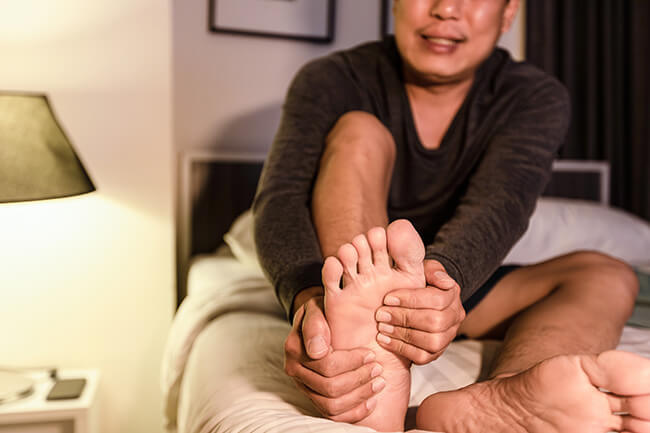Osteoarthritis, commonly known as OA, is a degenerative joint disease that affects millions of people worldwide, particularly in their feet and knees. It occurs when the protective cartilage that cushions the ends of bones wears down over time, leading to pain, stiffness, and decreased mobility. While aging is a primary risk factor for osteoarthritis in feet and knees, other factors such as genetics, obesity, joint injuries, and repetitive stress on the joints can also contribute to its development.
In the feet and knees, osteoarthritis typically develops gradually, as cartilage slowly breaks down, causing bones to rub against each other, leading to inflammation and pain. This process can be exacerbated by factors such as overuse, improper footwear, or previous injuries to the joints.
As the condition progresses, individuals may experience symptoms such as:
Pain
 Persistent pain in the affected joints, particularly after periods of activity or prolonged periods of rest.
Persistent pain in the affected joints, particularly after periods of activity or prolonged periods of rest.
Stiffness
Reduced flexibility and stiffness, especially in the morning or after long periods of inactivity.
Swelling
Swelling and tenderness around the affected joints, often accompanied by a feeling of warmth.
Limited mobility
Osteoarthritis in feet and knees makes walking, climbing stairs, or performing routine activities difficult due to pain and stiffness.
Fortunately, several treatment options are available to manage the symptoms of osteoarthritis in the feet and knees and improve quality of life for affected individuals. These treatment strategies may include:
Medications
Over-the-counter pain relievers such as acetaminophen or nonsteroidal anti-inflammatory drugs (NSAIDs) can help reduce pain and inflammation. In some cases, corticosteroid injections may be recommended to provide temporary relief from severe symptoms.
Physical therapy
A tailored exercise program can help improve joint flexibility, strengthen muscles around the affected joints, and alleviate pain. Physical therapists can also provide guidance on proper body mechanics and assistive devices to reduce stress on the joints during daily activities.
Footwear modifications
Wearing supportive, cushioned shoes with proper arch support can help distribute weight evenly across the feet and reduce pressure on affected joints. Custom orthotics may also be recommended to provide additional support and stability.
 Assistive devices
Assistive devices
Using assistive devices such as braces, canes, or splints can help reduce strain on the joints and improve mobility for individuals with osteoarthritis in the feet and knees.
Surgery
In severe cases where conservative treatments fail to provide adequate relief, surgical options such as joint replacement surgery may be considered to repair or replace damaged joint surfaces and restore function.
Osteoarthritis in the feet and knees can significantly impact daily life, causing pain, stiffness, and reduced mobility. However, with early diagnosis and appropriate management strategies, individuals can effectively manage their symptoms and maintain an active lifestyle.
By incorporating a combination of medication, physical therapy, lifestyle modifications, and, if necessary, surgical interventions, individuals with osteoarthritis can achieve improved joint function and overall wellbeing.
If you suspect you may be experiencing symptoms of osteoarthritis, it’s essential to consult with a healthcare professional for an accurate diagnosis and personalized treatment plan tailored to your needs.

